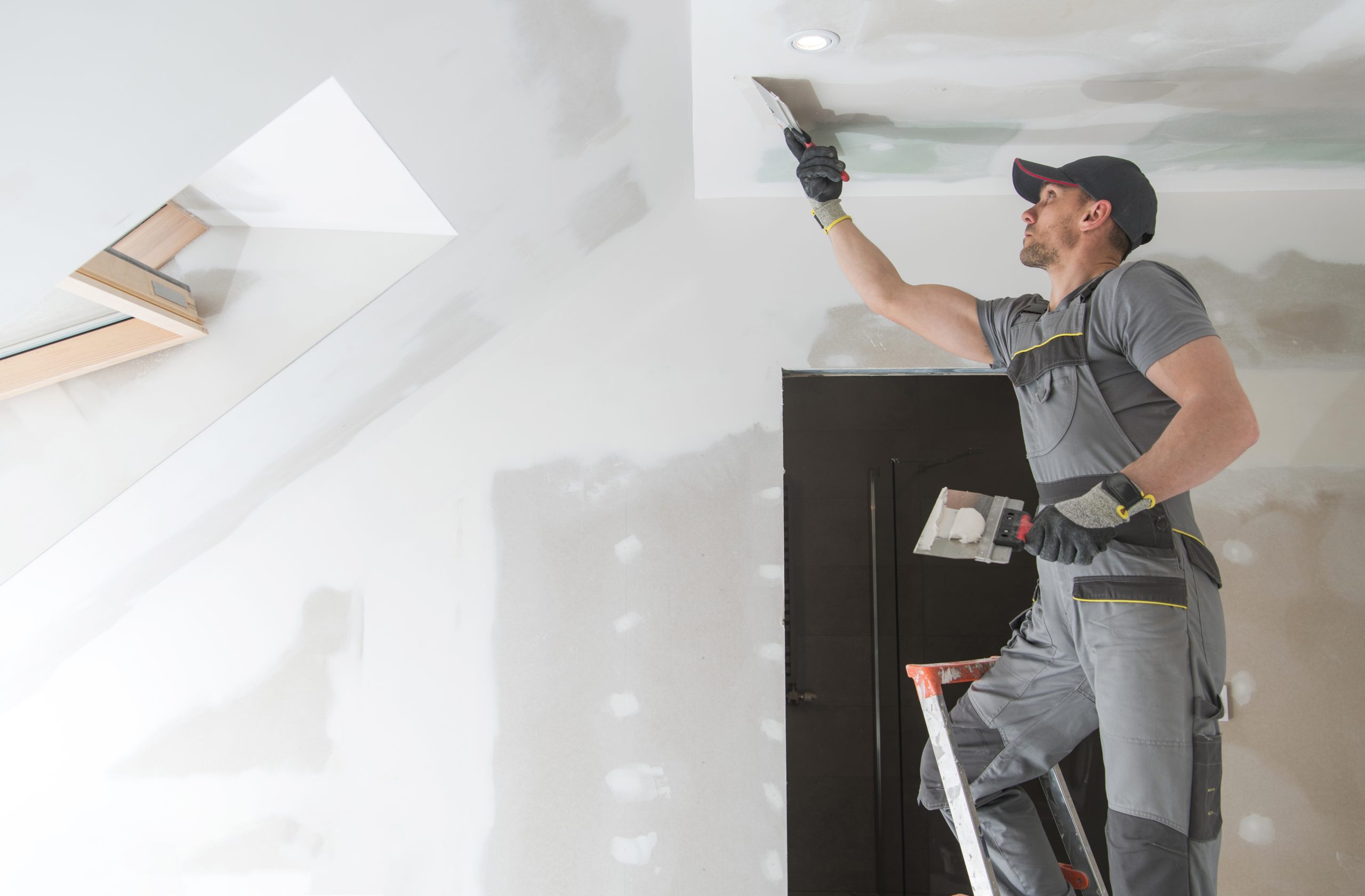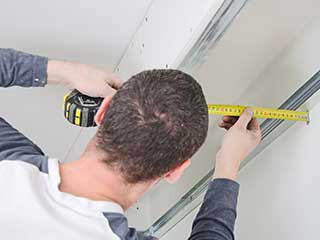A Comprehensive Guide to Mastering Drywall Fixing and Installation
This guide uses a complete exploration of drywall repair work and installment, providing to both amateurs and seasoned specialists. It outlines important tools, methods for patching and hanging sheets, and the critical ending up procedures. Interior Painting. By comprehending usual challenges, people can achieve sleek outcomes. Mastering these abilities not just boosts one's home but additionally develops self-confidence in do it yourself ventures. What fundamental suggestions will ensure a successful job throughout?
Crucial Devices for Drywall Repair Service and Setup
When beginning on drywall repair and installation, a couple of necessary devices can substantially improve the effectiveness and top quality of the job. A drywall knife, typically available in various sizes, is important for using joint substance and smoothing joints. A taping knife is also necessary for feathering edges and making certain a smooth coating. In addition, a drywall saw or utility blade permits precise cutting of drywall sheets to fit any room.
:max_bytes(150000):strip_icc()/SPR-solutions-to-common-drywall-problems-p2-4120949-not-on-stud_53719-051c5226ba8f478086c3994975acf8c9.jpg)
Step-by-Step Guide to Patching Holes
Covering openings in drywall is a simple process that can bring back the wall surface's appearance and stability. To begin, the location around the opening ought to be cleansed and any kind of loosened particles removed. For little holes, a basic spackle or joint compound can be applied with a putty knife. Bigger openings might need a spot; a piece of drywall can be reduced to fit the opening, secured with adhesive or screws, and then taped around the sides. Once the patch remains in place, joint substance is applied over the spot and feathered bent on blend with the surrounding wall. After the compound dries out, sanding is necessary to attain a smooth finish. The fixed location can be keyed and painted to match the remainder of the wall. This technique ensures a smooth repair service, improving the total appearance of the drywall and preserving its architectural stability.
Techniques for Hanging Drywall Sheets
After efficiently repairing holes in drywall, the next step includes hanging new drywall sheets to develop a seamless surface area. To achieve this, one must start by determining the wall surface area properly and reducing the drywall sheets to fit. It is vital to hang the sheets flat for far better architectural integrity, starting from the top and working downwards.
Making use of a drywall lift can streamline the procedure, particularly for ceiling installments. Once placed, protecting the sheets with drywall screws at periods of regarding 12 inches along the sides and 16 inches in the area is important. This guarantees a solid hold and reduces the risk of drooping. For corners, the sheets ought to be reduced to fit well, permitting for cleaner joints. It is recommended to startle the joints between sheets to strengthen the general framework, producing an extra durable finish ready for the next stage in the drywall setup procedure.
Ending Up Touches: Insulation and Mudding
Finishing the drywall installment involves the vital actions of mudding and taping, which more info ensure a smooth and refined surface. Taping calls for the application of joint tape over the joints between drywall sheets. Drywall Repair Ogden UT. This tape can be either paper or fiberglass fit together, with each type offering unique advantages. After taping, the next action is mudding, where joint compound, or "mud," is applied to cover the tape and fill up any imperfections
Using a drywall knife, the compound ought to be spread uniformly, guaranteeing a feathery edge to minimize noticeable changes. Multiple layers are commonly necessary, with fining sand in between each layer to accomplish a smooth surface. Cautious attention throughout this procedure is essential, as it substantially influences the last appearance of the wall surface. With the right strategy and perseverance, the end result will be a flawless foundation ready for paint or completing touches.
Common Errors to Avoid in Drywall Projects

An additional common error is not allowing enough drying out time between coats, which can trap wetness and compromise the surface. Moreover, ignoring to feather the sides properly can develop visible lines and blemishes. Ultimately, missing sanding or using inappropriate methods may leave harsh areas. By knowing these challenges, individuals can substantially enhance the high quality of their drywall tasks and achieve a professional-looking coating.
Regularly Asked Questions
Can I Fix Drywall Without Specialist Assist?
Yes, one can fix drywall without professional aid. With the right devices, products, and support, individuals can efficiently handle minor repair services. Nevertheless, substantial damage might need expert expertise for optimal outcomes and sturdiness.
For How Long Does Drywall Compound Take to Dry?
Drywall compound normally takes between 24 to 2 days to dry completely, relying on aspects such as moisture and temperature. Thinner layers may dry out faster, while thicker applications require even more time for optimal results.
What's the Best Kind Of Paint for Drywall?
The best kind of paint for drywall is typically a water-based latex paint. It supplies outstanding insurance coverage, toughness, and simplicity of application, making it optimal for indoor wall surfaces while permitting easy clean-up with soap and water.

How Do I Avoid Mold on Drywall?
To stop mold on drywall, assurance proper air flow, control moisture levels, utilize mold-resistant products, and immediately deal with any leakages. Routine evaluations and prompt remediation of water damages are likewise vital for long-term avoidance.
Is Drywall Recyclable After Elimination?
Drywall is recyclable after removal, gave it is devoid of impurities like mold and mildew, paint, or other unsafe products. Recycling centers can process it into brand-new products, advertising sustainability and minimizing landfill waste in building.
When beginning on drywall repair and setup, a few necessary devices can substantially enhance the effectiveness and high quality of the work. After successfully fixing openings in drywall, the next step involves hanging brand-new drywall sheets to create a seamless surface. Finishing the drywall setup includes the essential steps of taping and mudding, which ensure a smooth and refined surface. Accomplishing a sleek coating in drywall projects can be tough, and several usual mistakes can undermine the top quality of the work. Yes, one can repair drywall without specialist aid.